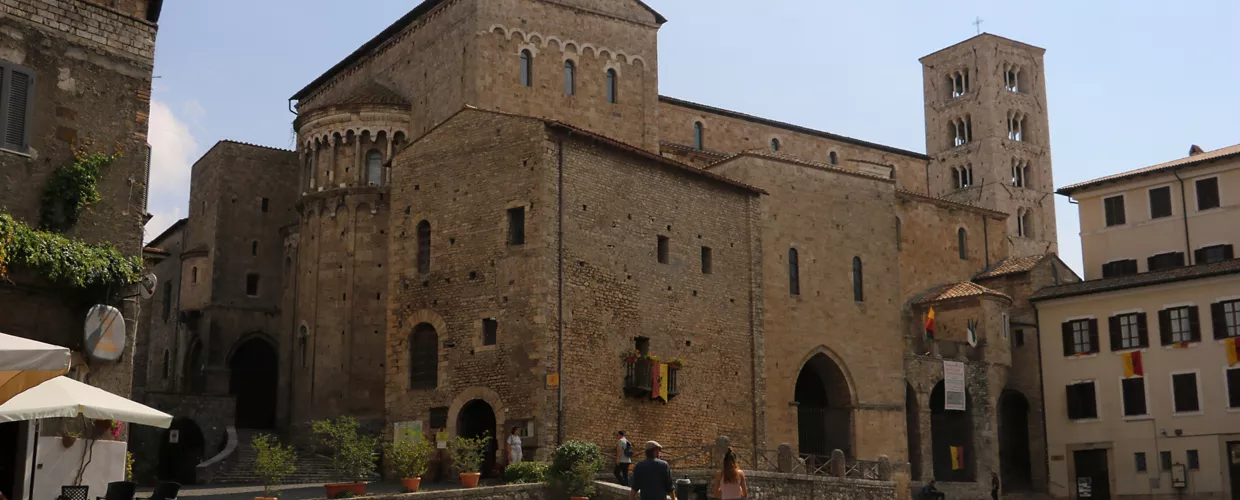This content was automatically translated. View the original text.


Overview
On a rocky spur, built by the Hernici, conquered by the Romans in 306 BC and surrounded by mighty walls in the 2nd century, Anagni was a papal residencein the Middle Ages, and Boniface VIII, the best known of the popes, thanks in part to the verses of Dante's Inferno, was born there. Here, once he ascended the papal throne in 1294, he suffered the humiliation of being captured in his palace by the men of Philip IV the Fair, King of France: hence the medieval iconography depicting him in the famous episode of the “slap of Anagni” as a testimony to the outrages and insults inflicted. But Anagni's fame is not only due to this historical event. It is the Cathedral and its frescoed vaults that amaze people, so much so that the frescoed crypt of San Magno is known as a “medieval Sistine chapel”.
However, the medieval testimonies to Anagni do not end here; walking along the main street, Strada Vittorio Emanuele, you can see the mullioned windows and large two-arched loggia of Pope Boniface VIII's palace, dating back to the early 13th century. Its rooms, with large frescoed halls, and the Boniface Museum of Southern Lazio are open to visitors. Further on, the Town Hall is an austere 12th-century building with a 15th-century loggia. As you proceed, one of various medieval buildings is the Barekow House at no. 89, with a Viterbo loggia external staircase and a façade decorated by the 19th-century Swedish painter Albert von Barekow. From Piazza Cavour there is a beautiful view of the mountainous landscape.
03012 Anagni FR, Italia